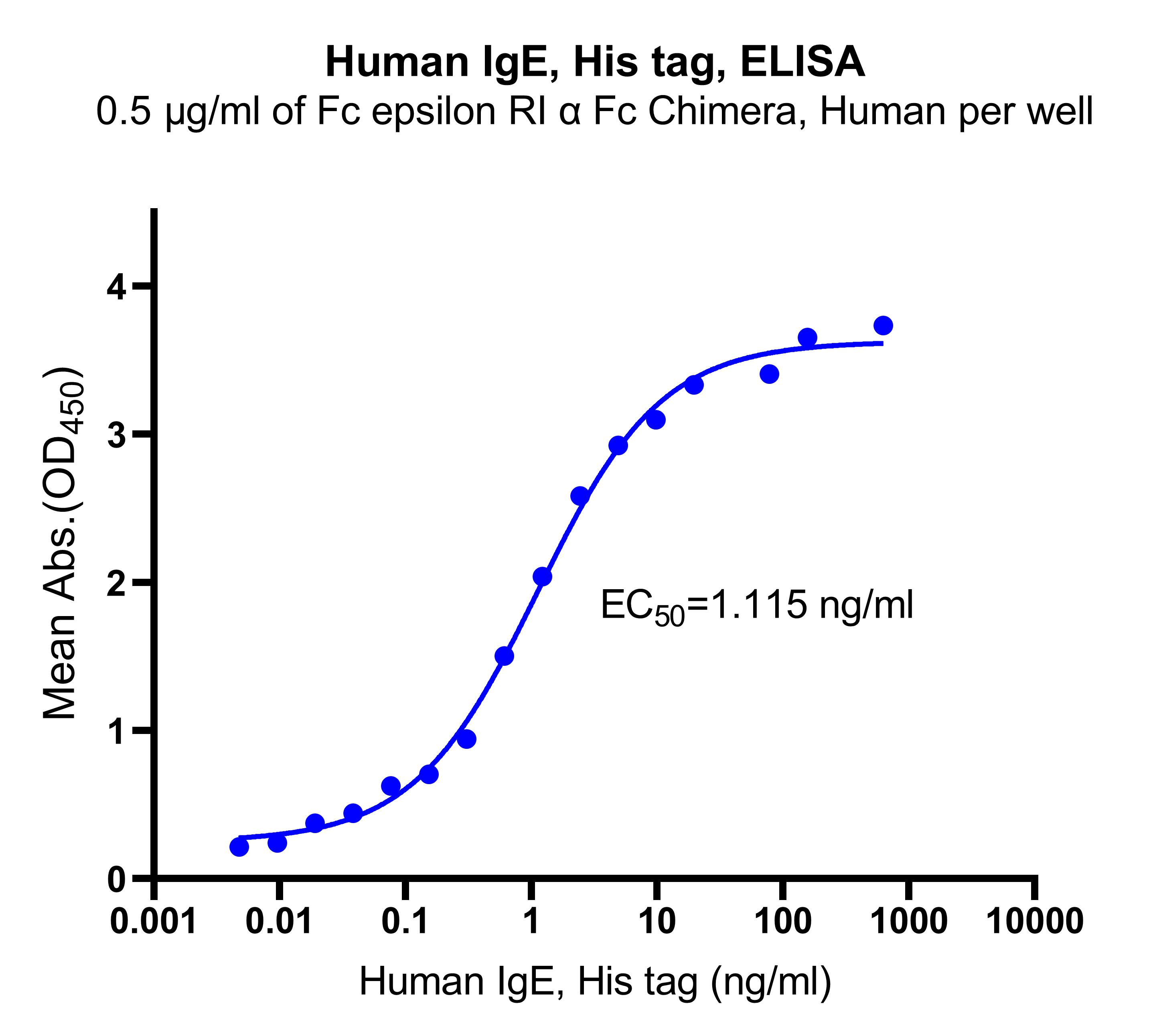Protein sequence (P01854, Lys208-Gly427, with C-His tag) KCADSNPRGVSAYLSRPSPFDLFIRKSPTITCLVVDLAPSKGTVNLTWSRASGKPVNHSTRKEEKQRNGTLTVTSTLPVGTRDWIEGETYQCRVTHPHLPRALMRSTTKTSGPRAAPEVYAFATPEWPGSRDKRTLACLIQNFMPEDISVQWLHNEVQLPDARHSTTQPRKTKGSGFFVFSRLEVTRAEWEQKDEFICRAVHEAASPSQTVQRAVSVNPG
12 months from date of receipt, -20 to -70 °C as supplied.
6 months, -20 to -70 °C under sterile conditions after reconstitution.
1 week, 2 to 8 °C under sterile conditions after reconstitution.
Please avoid repeated freeze-thaw cycles.
Ig epsilon chain C region is a protein that in humans is encoded by the IGHE gene. IGHE has been predicted to enable antigen binding activity and immunoglobulin receptor binding activity. Predicted to be involved in several processes, including activation of immune response; defense response to other organism; and phagocytosis. IGHE has also been predicted to be located in extracellular region, a part of immunoglobulin complex, circulating, and active in external side of plasma membrane. Immunoglobulin E (IgE) are antibodies produced by the immune system. Each type of IgE has specific "radar" for each type of allergen. IgE-mediated food allergies is when the immune system reacts abnormally when exposed to one or more specific foods such as milk, egg, wheat or nuts.

Immobilized Fc epsilon RI α Fc Chimera, Human (Cat. No. UA010147) at 0.5 μg/mL (100 μL/well) can bind Human IgE, His tag with EC50 of 0.885-1.402 ng/ml.
2 μg(R: reducing conditions)